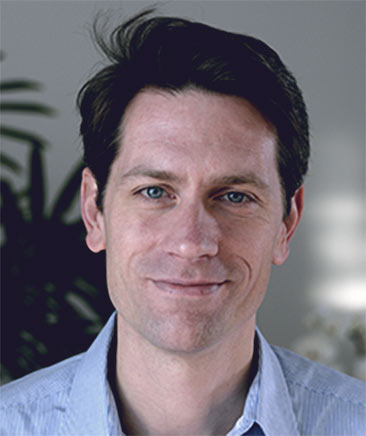The healthcare industry is in the midst of an evolution from volume to value, but it will be a long time before we can say that the old model is behind us. As I wrote in my previous post, this evolution isn’t an overnight transformation but rather a slow burn. This is forcing medtech companies to have “a foot in both worlds:” They must continue partnering with clinical stakeholders while addressing the emerging needs of commercial stakeholders, but at a pace that's in sync with their own evolution. Sometimes that pace is extremely rapid and sometimes feeling a bit more glacial.
I borrowed that phrase applied to this context from Tim Schmid, chief strategic customer officer at the Johnson & Johnson Medical Devices Companies. Tim participated in a panel that I hosted at The MedTech Conference (formerly AdvaMed) last September, and I sat down with him afterward to get additional insight into how his organization is navigating the changing healthcare landscape.
Q: During the panel, you spoke a lot about the changes that are under way in the U.S. health system. Can you comment on these changes and how they’re impacting the Johnson & Johnson Medical Devices Companies?
A: Many converging factors—from hospital consolidations to the shift from volume-based to value-based models—is putting increased pressure on health systems. U.S. hospital consolidation has created larger, more powerful health systems, which are in turn seeking greater economies of scale and negotiating leverage with medical device companies. It’s also becoming a more complex and sophisticated buying process with multiple economic and clinical stakeholders within a health system involved in purchasing decisions.
In the next five years, we believe that the top 150 health systems will control at least 75% of the market. [ZS agrees with this assessment.] Physician influence also is changing in this equation as more and more of them become employees of health systems. While we always see physicians being critical stakeholders, they are no longer the sole driver of medical device purchasing decisions..
We believe that these two trends—hospital consolidation and the shift in decision makers within health systems—are dramatically changing how medical devices are purchased and how purchasing decisions occur in the market. For companies like ours, it’s no longer enough to just make medical devices. We must demonstrate greater clinical and economic value at every point along the care pathway.
Q: How has J&J responded?
A: In 2015, we started to transform our medical devices commercial model to respond to trends and better align with where health systems were heading. First, we brought our hospital medical device businesses together. Before 2015, we had 18 separate medical device companies in the U.S. all operating independently of each other. We brought them together under one leadership team and one P&L, which was a really important decision focused on ensuring that we can leverage the breadth and depth of our portfolio. Then we created an integrated strategic customer management organization, which I lead.
There were three elements to building this group: first, to streamline and simplify the customer experience for health systems. Through our research, we learned that all our health system customers wanted one single, empowered point of contact who can help bring the best of Johnson & Johnson to these systems, aligned to their priorities. The second [element] was all about leveraging our scale. Customers are aggressively looking to reduce the number of suppliers that they work with to minimize complexity and costs. That provides us a great opportunity to transform how we work with these systems to help them achieve their objectives while providing access across our entire portfolio. The third element was focused on launching innovative services and capabilities to help health systems deliver value-based care by reducing costs, improving outcomes and advancing patient satisfaction.
Q: This journey isn’t easy. Even having one point of contact, considering all that goes on behind that contact, isn’t simple. It’s not like, “Hey, I just hired so-and-so, and now I’m done.” It’s so much more than that.
A: Yes, this is not an 18-month endeavor. We are on a five- to seven-year journey. This involves not only evolving our customer-facing teams but also evolving our innovation model and building the back-office systems and processes to make it easier for health systems to do business with us. All parts of the company must evolve. We are starting to see it pay off, but it’s a long-term strategic play.
Q: You are on your own journey and customers themselves are in the midst of their own transition. Can you tell me more about how you view the challenge of meeting your customers where they are on this journey?
A: Because our customers are in such different phases in this broader transformation, having one commercial model or deployment is no longer an option. We're increasingly being asked to tailor our commercial model to meet their needs, so that’s where I think it’s really important for us to be comfortable living in two worlds. We’re now moving away from deploying a one-size-fits-all sales force and commercial model to one that really is unique and specific to the account, not just the geography. That’s a big shift for our company and our industry.
Q: All of the changes you’ve discussed are huge. What are some of the change management challenges you’ve faced?
A: Historically, we have had a very decentralized, autonomous management model. What we’re talking about now is creating an account management model in our medical devices business that flies completely in the face of that. It isn't an easy shift. By the way, some customers aren’t there yet, so some people don’t see the importance of this change because in their minds, the customers haven’t changed that much. That is why we have got to be flexible and able to meet customers where they are on the journey.
Q: How do you overcome these barriers?
A: A few [ways]: One is about getting our organization to understand that account management is really a business strategy. It’s not a function. It’s about the customer and how we remain relevant in the face of evolving customers. [ZS agrees again.] I have learned that when you give an organization a strong externally oriented reason for change, while there will always be pockets of resistance, people will follow. When driving transformational change, you also need to have an unwavering commitment to stay the course. There will be bumps in the road, mistakes will be made, but you must remain committed to the strategy, course correct where necessary and keep moving forward. Another dimension is about talent. In addition to leveraging our strong internal talent, we have accelerated the acquisition of talent from other parts of Johnson & Johnson and outside to bring in new capabilities critical to the success of our account management model. Diverse experiences and perspectives are very important.
Q: You’re too modest to say it, but I think the quality of the senior leaders involved in a change like this is key. Without full commitment at the senior level and really strong, cross-functional leadership at the top, it doesn’t go very far.
A: Leadership commitment and resilience are critical at all levels, and I would say that it's not just commercial leadership that needs to be aligned to a transformation of this nature. The implications of this shift touch all functions: R&D, supply chain, HR, medical affairs, IT and others. We believe, as a medical device company, that healthcare systems are increasingly becoming our primary customers and, as a result, we must sharpen our focus on helping them deliver against the triple aim: reduce costs, improve outcomes and advance patient satisfaction. The goal needs to be about getting the entire enterprise to think more broadly about this shift.















